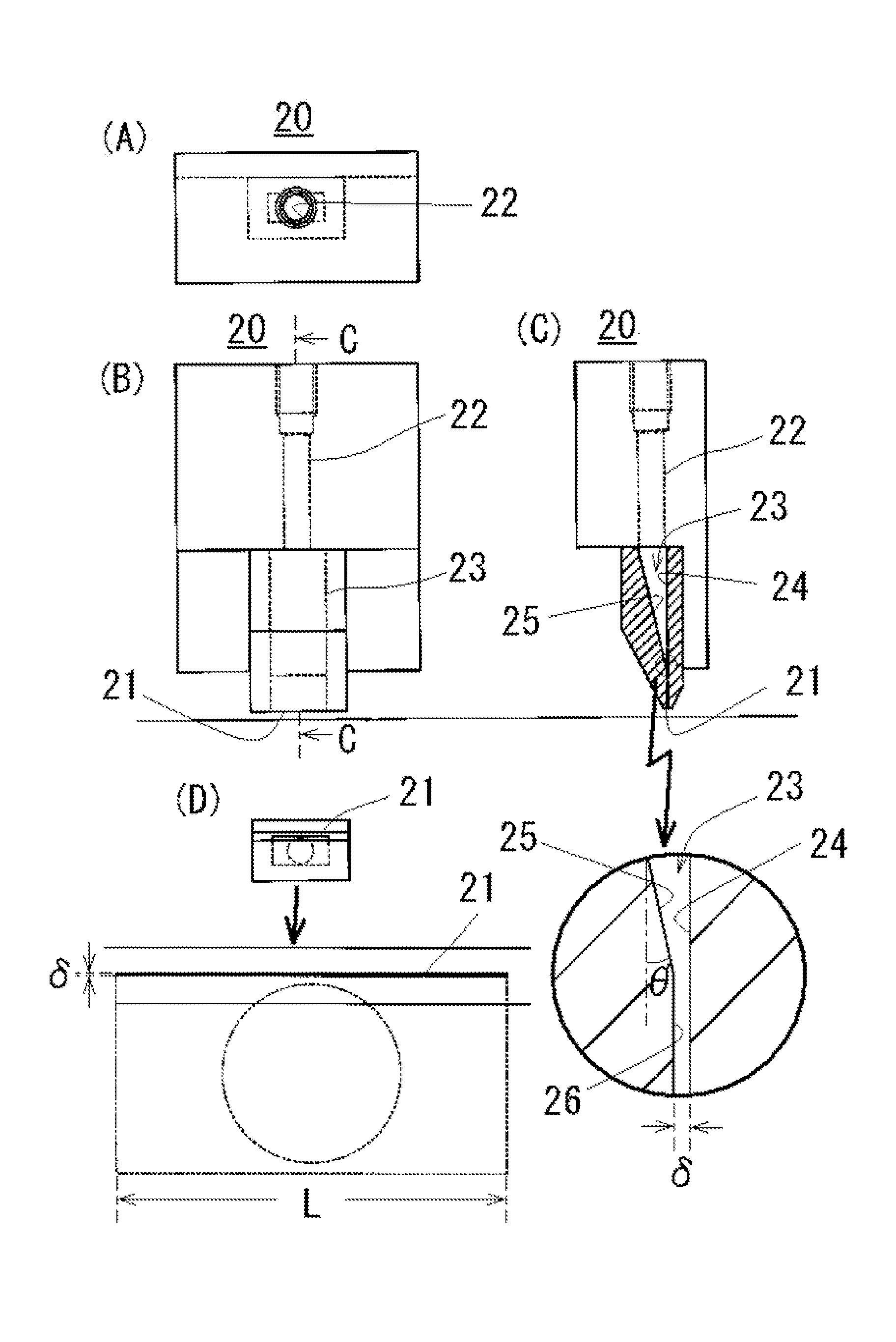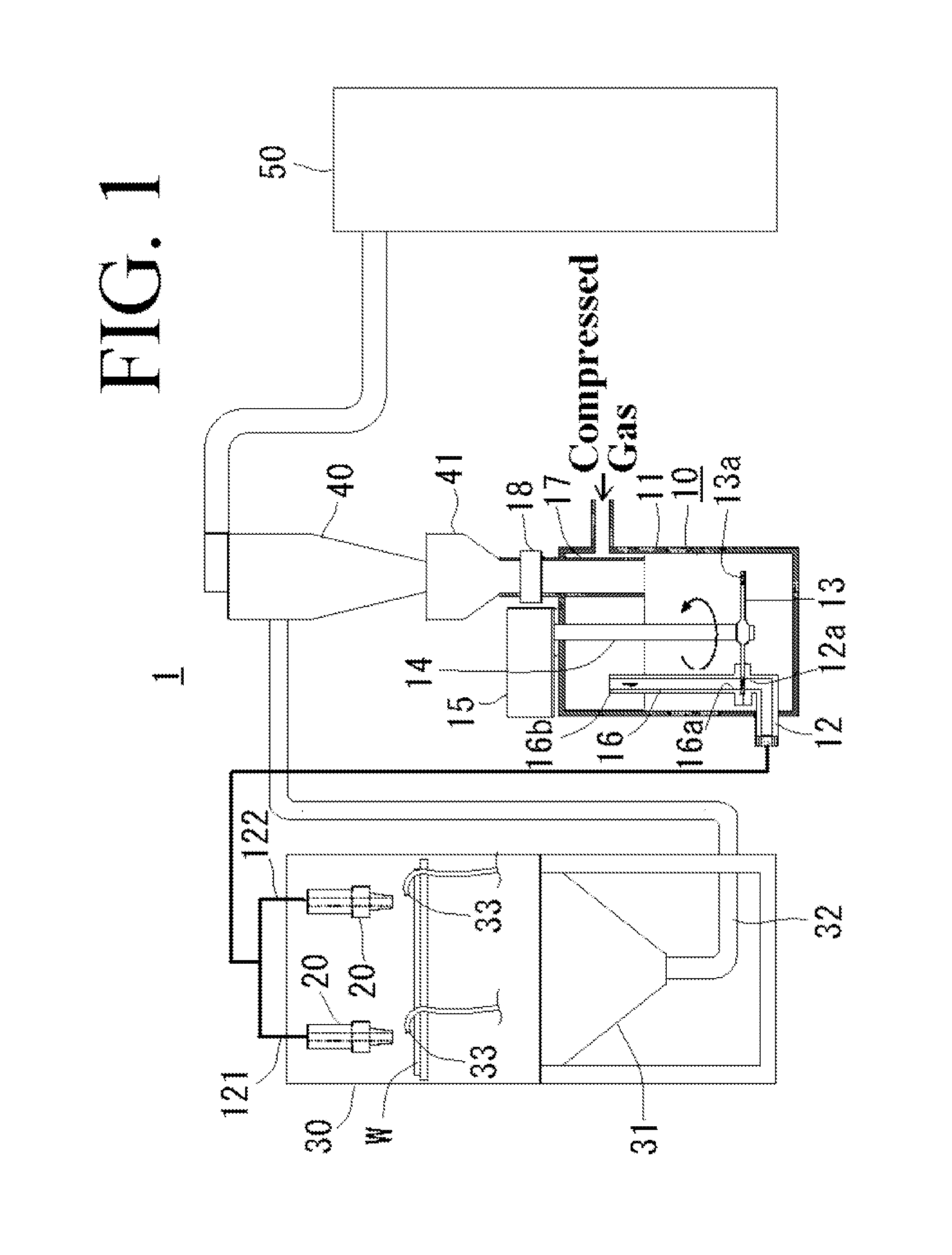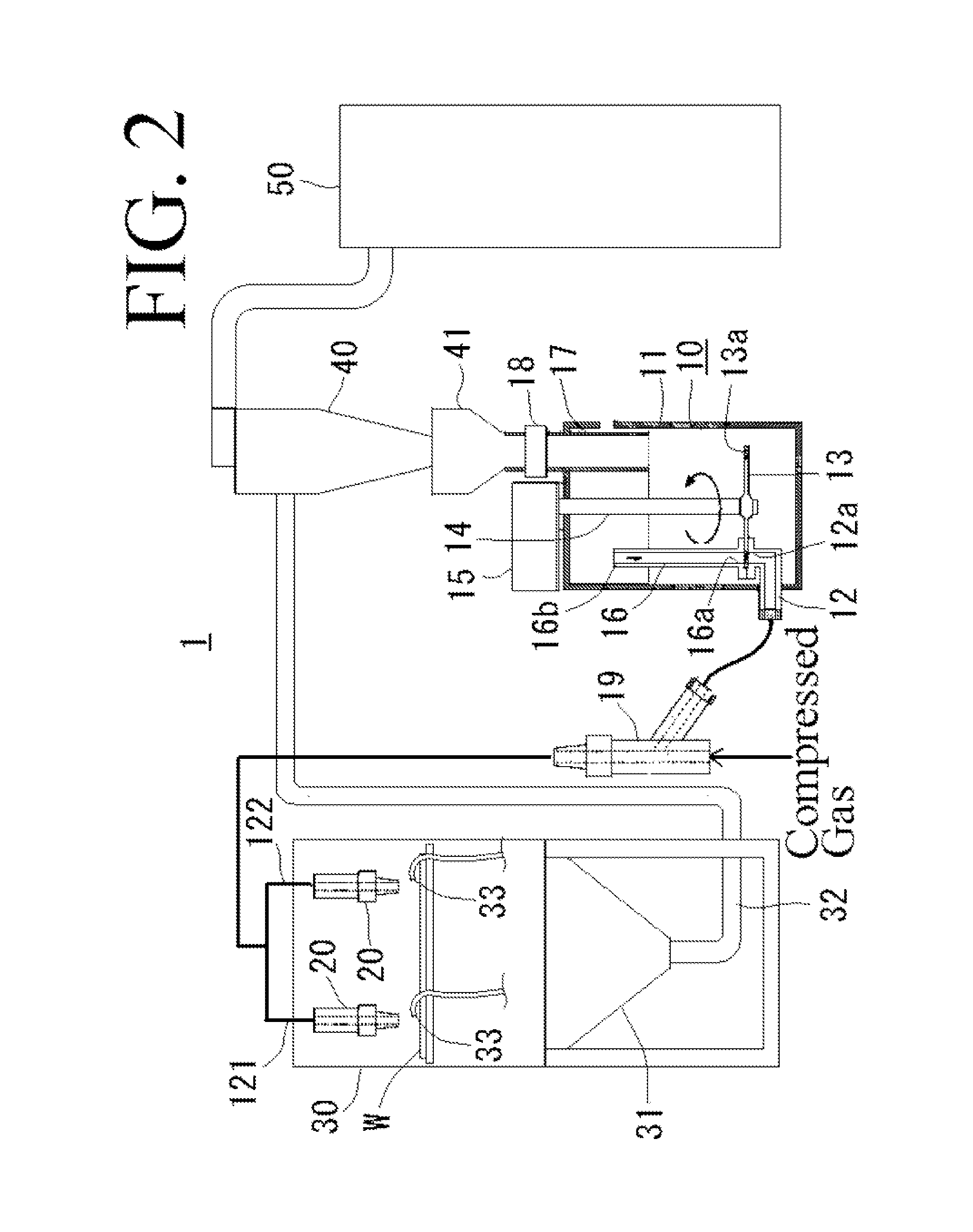Scribing method using blasting machine
a laser scribing and blasting machine technology, applied in the field of scribing methods, can solve the problems of limiting the application of materials, requiring a considerable initial investment, and complicated processing apparatus used for laser scribing
- Summary
- Abstract
- Description
- Claims
- Application Information
AI Technical Summary
Benefits of technology
Problems solved by technology
Method used
Image
Examples
example 1
Scribing Glass Substrate
[0086]An ejection nozzle with a slit-shaped ejection opening with a width 40 μm and a length 7 mm was disposed at an ejection distance of 0.3 mm to the surface of a glass substrate (6.5 by new Mohs hardness (hereinafter, all hardness will be indicated by “new Mohs hardness”)) where masking was not performed. The process was performed while the abrasive (WA#3000: hardness of 12 and median diameter of 4 μm) was ejected at an ejection quantity of 0.6 g / min and an ejection pressure of 0.5 MPa while moving the ejection nozzle at the moving speed of 3 m / min in the longitudinal direction of the ejection opening. The volume of the abrasive relative to the discharge gas amount was as described above.
[0087]As a result of scribing by the above-described method, a groove with a width 80 μm and a depth 10 μm was precisely formed by directly ejecting the abrasive on the glass substrate without the masking.
Example 2
Scribing Photoelectric Conversion Film of Solar Cell
[0088]I...
example 2
Test
[0091]
TABLE 1Scribing test on the photoelectric conversion film of a solar cellProcessing stateAbrasiveWidth of SpecificEjectioncut-offMate-gravityquantitylineGeneralProcessing rial Hardness(g / cm3)(g / min)(μm)commentstateStain-4.5 to 57.61.580ExcellentOnly CIGS lessfilm steelremovedGlass6.52.50.5250GoodOnly CIGS film removedZircon93.540.6140SlightlyMo film BadpartiallypeeledWA123.850.6160BadMo film alsoremovedNotice: The particle shape of WA is polygonal while the particle shapes of the others are spherical. As described above, the Mo film was removed by cutting with the WA, however, cut-off lines with a constant width and depth were able to be formed.
[0092]As results described above, even in the case where the abrasives were directly ejected without masking, scribing a groove with a width equal to or less than 1 mm, which had been conventionally impossible, was succeeded in examples using any abrasive.
[0093]However, a conducting layer with a high hardness (an Mo layer) was forme...
PUM
| Property | Measurement | Unit |
|---|---|---|
| length | aaaaa | aaaaa |
| pressure | aaaaa | aaaaa |
| specific gravity | aaaaa | aaaaa |
Abstract
Description
Claims
Application Information
 Login to View More
Login to View More - R&D
- Intellectual Property
- Life Sciences
- Materials
- Tech Scout
- Unparalleled Data Quality
- Higher Quality Content
- 60% Fewer Hallucinations
Browse by: Latest US Patents, China's latest patents, Technical Efficacy Thesaurus, Application Domain, Technology Topic, Popular Technical Reports.
© 2025 PatSnap. All rights reserved.Legal|Privacy policy|Modern Slavery Act Transparency Statement|Sitemap|About US| Contact US: help@patsnap.com



